| Time |
Presentation Contents |
Venue |
| 13:10 – 13:30 |
Introduction of KERAS Community
 Shared meeting room (basement floor), D-Tower
Shared meeting room (basement floor), D-Tower
I would like to introduce you to the people of Keras Korea. Let’s talk about your interests, your jobs, and your goals for the future.
 PresenterTaeyoung Kim
PresenterTaeyoung Kim
To help people learn about deep learning by using Keras, a simple and intuitive deep learning library, I have written a book titled Python Deep Learning Keras with Blocks. I also run 'Kim Taeyoung’s Blog about Keras' and regularly post in communities such as 'Keras Korea' and 'Kaggle Korea'. With members of the 'Reinforcement Learning Korea’s Alpha-Omok Project,’ I have established services that allow the public to familiarize themselves with the AlphaGo model. Currently, I am the general director of technology at Interspace Co., Ltd., actively taking part in an R&D project to apply AI to various fields based on the company’s motto, “Deep learning from the Sun to the cells” and “Reinforcement learning from games to the universe”.
|
Shared meeting room
(basement floor),
D-Tower |
| 13:30 – 14:00 |
KERAS Korea: A Community that Grows Together Shared meeting room (basement floor), D-Tower
Shared meeting room (basement floor), D-Tower
Nowadays, it is of great value to share technology with others. My presentation is about community activities through which people can grow together instead of growing alone. We will look into stories shared in the community and activities developed both online and offline by different people who are fascinated by the same field. I will also give you tips on how to communicate with others for mutual growth.
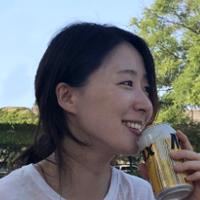 PresenterMijeong Jeon
PresenterMijeong Jeon
I am an iOS developer who is open to anything. I like to learn new fields quietly by myself and share that information with others. I am not a computer major, so I went into programming somewhat belatedly, but I am enjoying every bit of being part of this world. It is always fun to talk about technology and communicate with different people within a community. Recently, I became fascinated by AI and machine learning whilst working at Kera Korea and as a Microsoft AI MVP.
|
| 14:00 – 14:30 |
Keras in TensorFlow 2.0 Shared meeting room (basement floor), D-Tower
Shared meeting room (basement floor), D-Tower
Introducing the changes in TensorFlow 2.0 and the role of Keras in TensorFlow 2.0. In addition to using basic keras, we will also look at how to implement a custom model using Keras in TensorFlow.
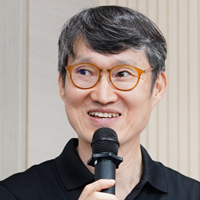 PresenterHaesun Park
PresenterHaesun Park
ML GDE (Machine Learning Google Developer Expert); I majored in mechanical engineering, but after graduation, read and wrote code.
I'm exploring the boundaries between software and science interestingly, contributing to the translation of TensorFlow documents.
I wrote a book titled "Do it! Deep Learning", and translated several books including “Python Machine Learning”, “Deep Learning with Python”, “Introdcution to Machine Learning with Python”,
“Hands-On Machine Learning with Scikit-Learn and TensorFlow”.
Blog: https://tensorflow.blog
Github: https://github.com/rickiepark
E-mail: haesunrpark@gmail.com
|
| 14:30 - 15:00 |
Chatbot (Keracom) Shared meeting room (basement floor), D-Tower
Shared meeting room (basement floor), D-Tower
As the Chatbot system has gained more popularity lately, many companies have attempted to establish their own Chatbot systems. However, the abstract concept of artificial intelligence has caused several misunderstandings. I would like to compare the existing text-based technology and the current AI (Deep Learning)-based technology and share the flow of natural language processing, which forms the core and acts as an example of the Chatbot system used for business. I would also like to introduce Keracon that can currently be found in the Open Source Contributhon.
 PresenterSeulki Kim
PresenterSeulki Kim
Having majored in Electronics and Computer Engineering at Hanyang University, I began my career as an S/W engineer, which led to me becoming an M/L engineer today. I took part in a project establishing the Chatbot system for natural language processing and developing an AI cover letter evaluation solution that uses text-based technology. Currently, I am a mentor for the Keracon Contributhon.
|
| 15:00 - 15:30 |
NNStreamer, Easy and Effective for Neural Network Model Shared meeting room (basement floor), D-Tower
Shared meeting room (basement floor), D-Tower
The use of deep neural networks has expanded from Cloud or previous high-performance devices to the On-Device AI of mobile/house appliances. On-Device AI is greatly efficient especially if a massive Online Data Stream generated directly from the Device requires low latency processing, if the expense of the Cloud becomes a problem, or if you are sensitive to personal data protection and security issues. Lately, there have been ideas about establishing On-Device AI in a Data Stream Pipeline form to set up an AI Application that satisfies all of the above requirements. My presentation will be about NNStreamer, which is a Pipeline Framework for the neural network and can be commonly used in Tizen, Android, Ubuntu, Yocto, and the macOS environment. Then I will give an introduction to how to use NNStreamer to easily and effectively develop an application.
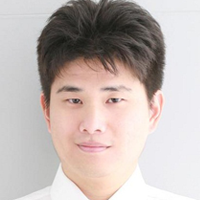 PresenterMyeongju Ham
PresenterMyeongju Ham
I majored in computer science at the University of Illinois at Urbana-Champaign. I have been working at Samsung Electronics since 2009 and have developed system S/W with Kernel from Tizen. Afterwards, my team and I moved on to improve the Tizen app and the platform development environment. Recently, I have become a member of an automatic driving project and am currently developing the NPU System SW and NNStreamer (neural network pipeline) for On-Device AI. For my Open Source activities I proposed the devfreq and extcon frameworks for the Linux Kernel as a maintainer as well as a founder of NNStreamer. I was also a committer for several projects, including NET Runtime and Tensorflow.
|
| 15:30 - 16:00 |
All about Open Source Shared meeting room (basement floor), D-Tower
Shared meeting room (basement floor), D-Tower
It is okay to feel helpless at first no matter how much you want to contribute to Open Source. Keras Korea has prepared various projects such as Contributhon and the Korean translations of official Keras documents to help beginners take their first steps as Open Source developers. While striving to spread Open Source culture and contributing to Open Source projects so far from Keras Korea, I have collected ideas and opinions for this presentation to talk about how to approach the system and what information needs to be obtained in advance.
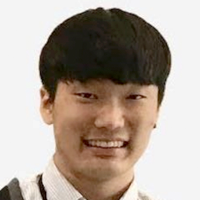 PresenterYounjoon Chung
PresenterYounjoon Chung
After majoring in computer engineering at Sogang University, I became a member of the Microsoft Student Partners and held many deep learning workshops and seminars. Currently, I am working at an IT firm in the R&D department for computer vision. I have also engaged as a contributor to various Open Source libraries such as Keras and matplotlib, and I am in charge of the Korean translation project of the official Keras document from Keras Korea. I am also interested in expanding Open Source culture.
|
| 16:00 – 16:30 |
Having the Best of Keras Shared meeting room (basement floor), D-Tower
Shared meeting room (basement floor), D-Tower
Keras is a deep learning library that is welcomed by many people because even beginners can use it with ease. However, a lot of them have trouble adding other functions or editing the layer of neural networks to their taste. We receive similar questions in open chat rooms. We plan to give an introduction to various functions that are useful but are still relatively unknown or which users have asked about so that users can feel free to use Keras and enjoy it.
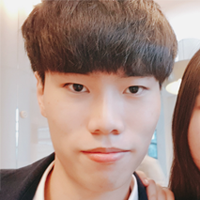 PresenterJunwon Hwang
PresenterJunwon Hwang
I am currently majoring in software at Sungkyunkwan University and serve as part of a Skilled Industrial Personnel team. I also take care of the open chat rooms as a Keras Korea staff member, and I give presentations at seminars or share opinions in various deep learning communities. I am interested in deep learning technology research and the development of applications overall, and I wish to provide useful tools and services to people.
|
| 16:30 – 17:00 |
Kaggle in Keras ! Shared meeting room (basement floor), D-Tower
Shared meeting room (basement floor), D-Tower
How should you begin studying about data? You found a platform called Kaggle, but you are new to everything about it. You have heard of Keras, PyTorch, and TensorFlow, but you do not know where to begin. People say Keras is a piece of cake, but not to you. Is there a way to be good at Kaggle? Let me show you how the beginners can familiarize themselves with Kaggle through Keras. There are useful tips and information needed for Kaggle as well!
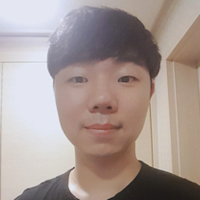 PresenterTaejin Kim
PresenterTaejin Kim
After graduating from university, I became so addicted to Kaggle that I refused to get a job and instead joined the Kaggle community. I believed that all of the studies I had done in school would only be completed outside of campus, which led me to participate in several school contests and club activities for business start-ups. I am indeed a bit too much into anything other than studying, but I do think that all of that experiences helped me grow! Currently, I am a staff member at Kaggle Korea Group.
|
| 17:00 – 17:30 |
YOLO? YOLK! Shared meeting room (basement floor), D-Tower
Shared meeting room (basement floor), D-Tower
Object Detection, a system that analyzes objects included those in video and image contents to find useful information or that provides a new user experience, is one of the most popular fields of computer vision in the present day. It boasts of high utility and popularity, so various APIs are being created to facilitate the use of Object Detection systems. However, there are difficulties in tuning the opened API to the right purposes or applying the actual data. All this led to the 2019 Open SW Contributhon Keras Community Project! Here is the Objective Detection Platform YOLK based on Keras.
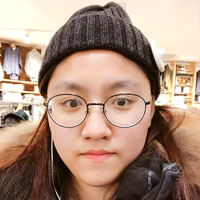 PresenterJunghyun Park
PresenterJunghyun Park
My encounter with AI began with the Drone Detection system project based on Machine Learning at Purdue University, with which I had so much fun. I am currently working as a Machine Learning Engineer at kakaoVX, specializing in computer visions. Now I am taking part in an R&D project in the Human Activity Recognition field. My goal is to provide services targeting many people, and anything exciting will catch my attention! I am also working with great people as a Keras Korea staff member.
|
| 17:30 – 18:00 |
Privacy protected. Verify your identity with your signatureShared meeting room (basement floor), D-Tower
What would it be like to be able to identify oneself without typing in IDs or passwords? Let’s find out how AI can be used to create a digital identity and let's come up with an example of mobile signature recognition with Keras.
 PresenterHyungsuk Kang
PresenterHyungsuk Kang
My fascination towards machine learning and AI has led me to major in Udacity machine learning nano degree and to create a document reader for the visually-impaired as a Google hack fair finalist. After learning the importance of collecting and processing data, I invented Naturecoin, which is a system that rewards users in return for the image data and consumer data about waste when throwing away recyclables in order to resolve environmental issues. This invention saw me win the GIX Innovation Challenge and become a Citypreneur finalist. I began to take interest in the decentralized identity (DID) and data privacy, and I am currently conducting an R&D project on bridge and identity verification from SpeckleOS to protect data portability and privacy between blockchains within the Polkadot Network (an interchain project).
|